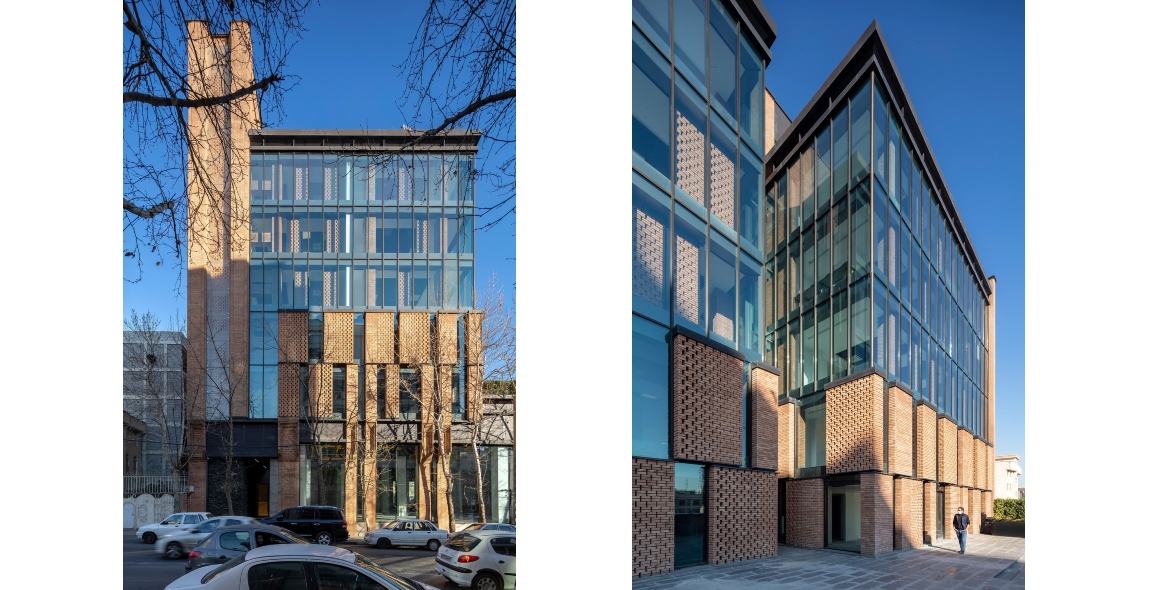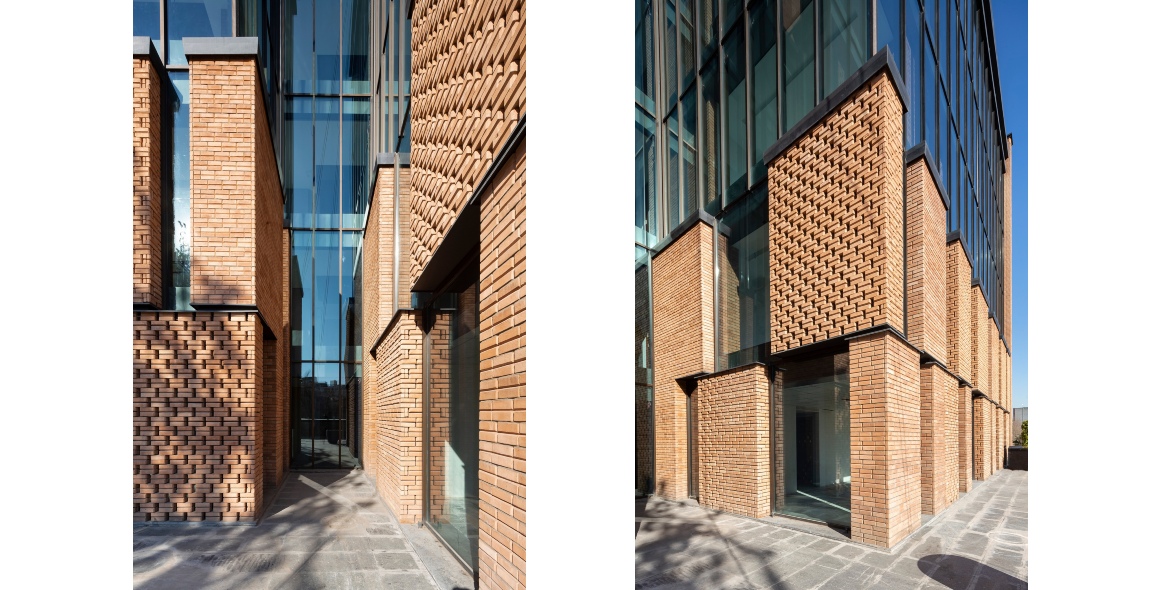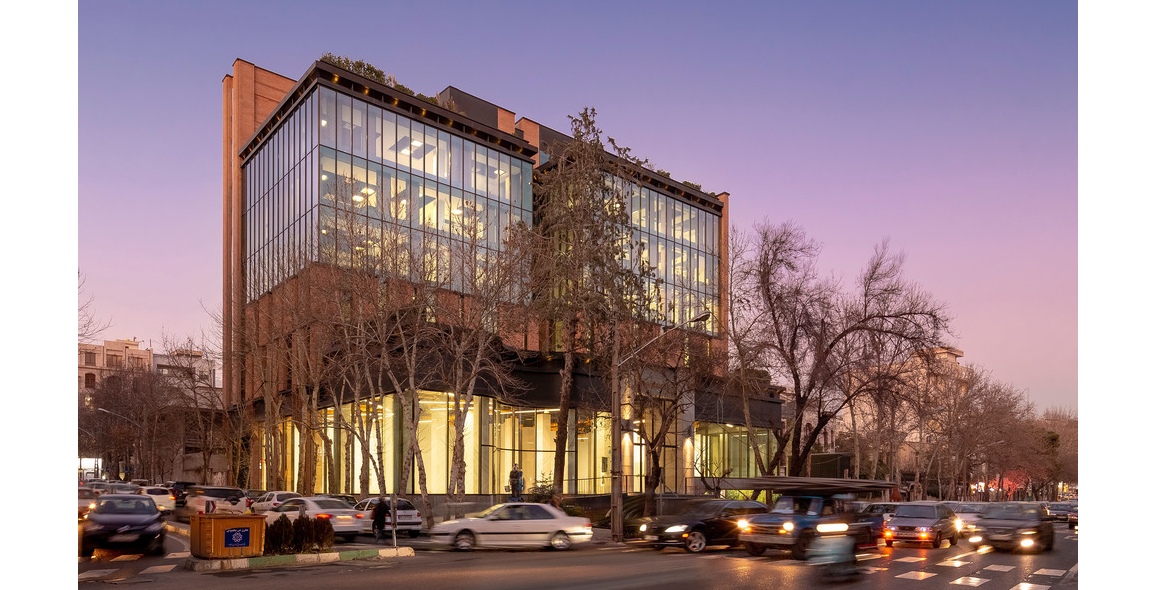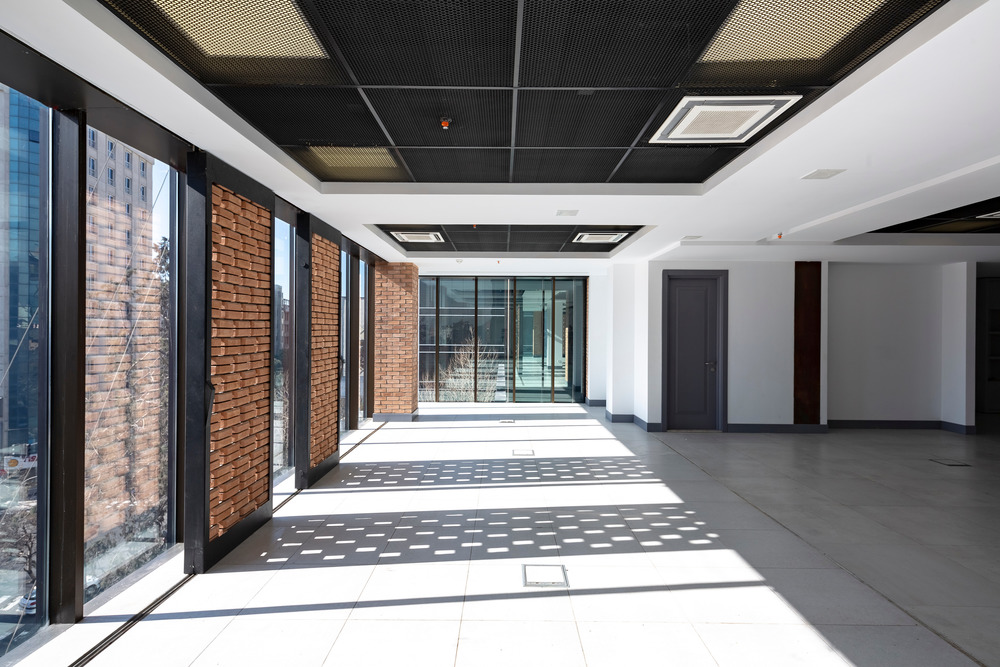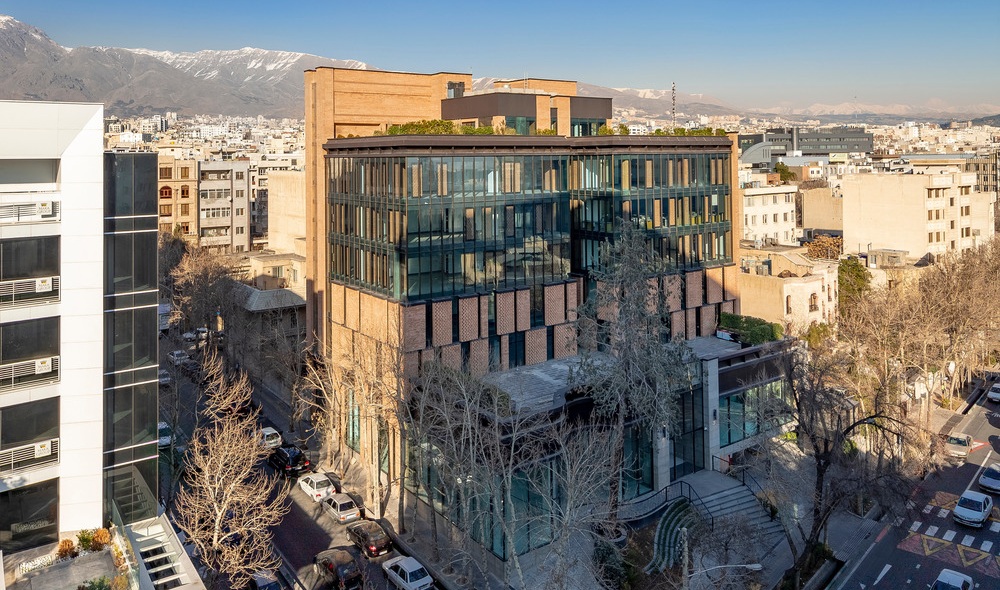
Iran’s reputation on the global stage has, in recent years, been controversial, depending on who you ask.
But peel away the layers of geopolitical tension and what can be found is a storied history supplemented by culture, craftsmanship and a vast intellect.
Embodying this is Bricks On The Move, an office building designed by the UK- and Iran-based Ákaran Architects, located in the capital Tehran.
What immediately jumps out is the façade composition of predominantly glass, oxidised panels and bricks.
The latter earthy blocks are rich in colour and tactility, found on every floor of the six-storey building and five basement levels that make up the carpark.
Ákaran Architects describes the architectural language as one that “yearns for a sense of timelessness, a sense of a building that will stand the test of time through the eras ahead”.
This it tells through the use of materials – the bricks represent the passage of time and a tribute to the past, together with the oxidized panels.
In fact, the bricks – some 30,000 of them – were handmade at a nearby kiln that was on the brink of closing down.
Thanks to this project, it was not only rescued from that fate, but also revived jobs in the local economy.


The glass and concrete panels signify the present, connecting, as a bridge would, between the old and new, and “on a larger scale, encourage a dialogue of tolerance”.
The positioning of the materials is far from random.
Sited along a street that connects two of the city’s main north-south arteries, it is a witness to the speed and haste of those living there.
On the lower three floors, closest to the madding crowd and synchronous with the height of the neighbouring buildings, the geometric-patterned brick modules are fixed in place to create the façade design, screening the inhabitants from the surroundings.
They are artistically arranged, lending a weightiness to the base of the office and juxtaposed against the lightness of the glazing.
Rise to the remaining upper floors and the bricks move indoors, forming panels behind the glass panels that play peek-a-boo with the immediate cityscape and distant mountains.
Ákaran Architects cleverly holds on to this thread of continuity by composing them this time as mobile panels.
Nevermind that each weighs in at a staggering 1,000kg – they have their own set of rails along which they can be pushed.
These bricks were specially designed to be lighter, with perforations made in them and screws to stitch them together.
The end result is the better control of natural light entering the interiors and also the introduction of poetic shadows and patterns on the floor, depending on the time of day.


Contemporary though the effect might be, the architecture of the building sends an important, universal message of the need to heed the past while keeping up with the times.
Bricks On The Move is typical of the style of Ákaran Architects, which prides itself on designing projects that consider “the essence of the created space and the continuation of an intriguing spatial dialogue with the environmental, political, social and cultural context”.
In their own small way, it could even be said that this firm and its founders Moeen Afzalkhani and Zahra Azizi are helping to repair their country’s international image.


 Share
Share
